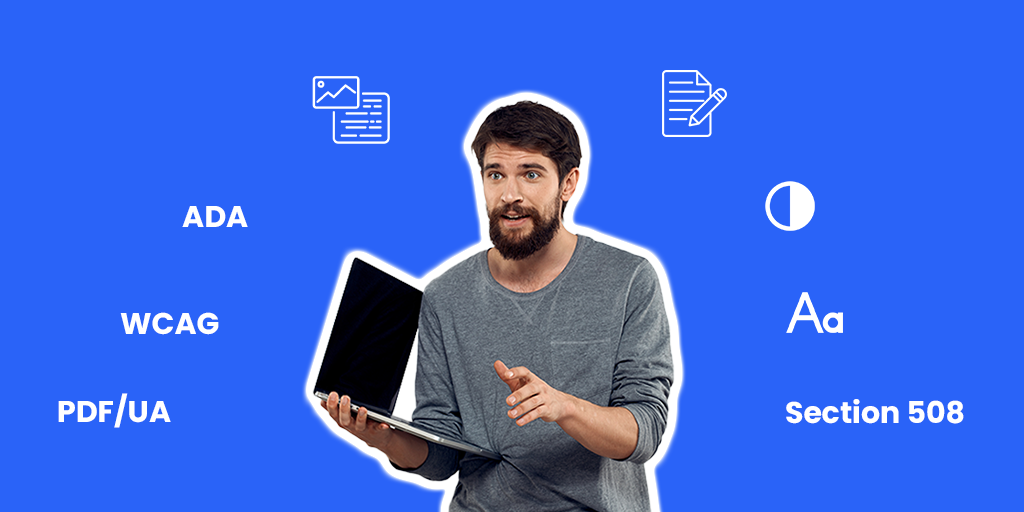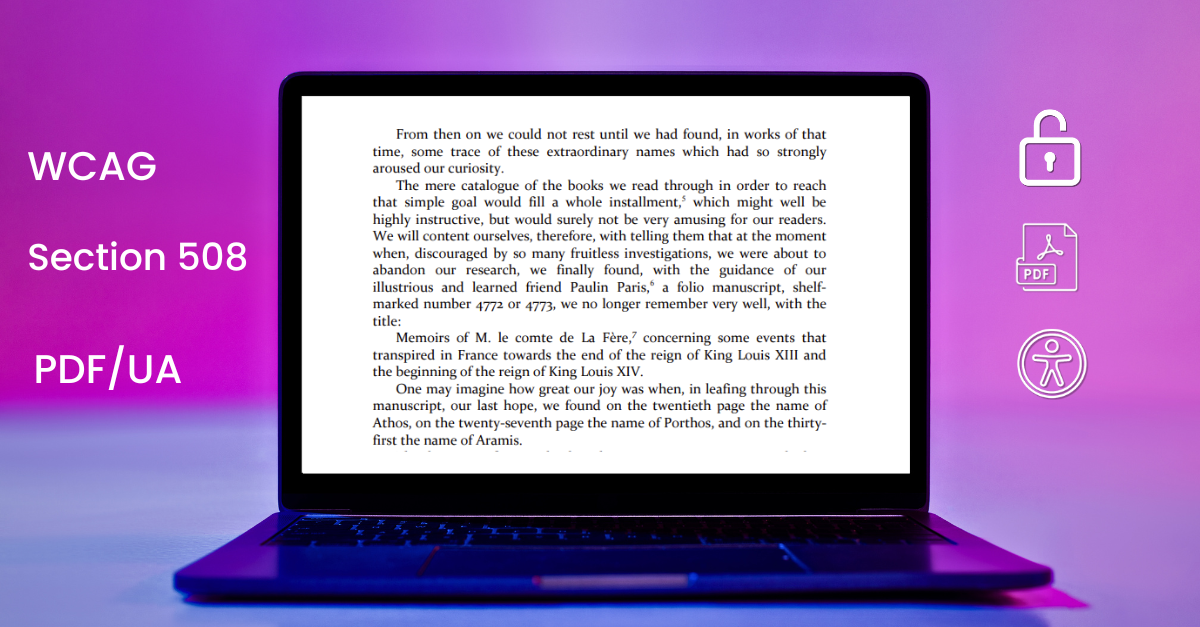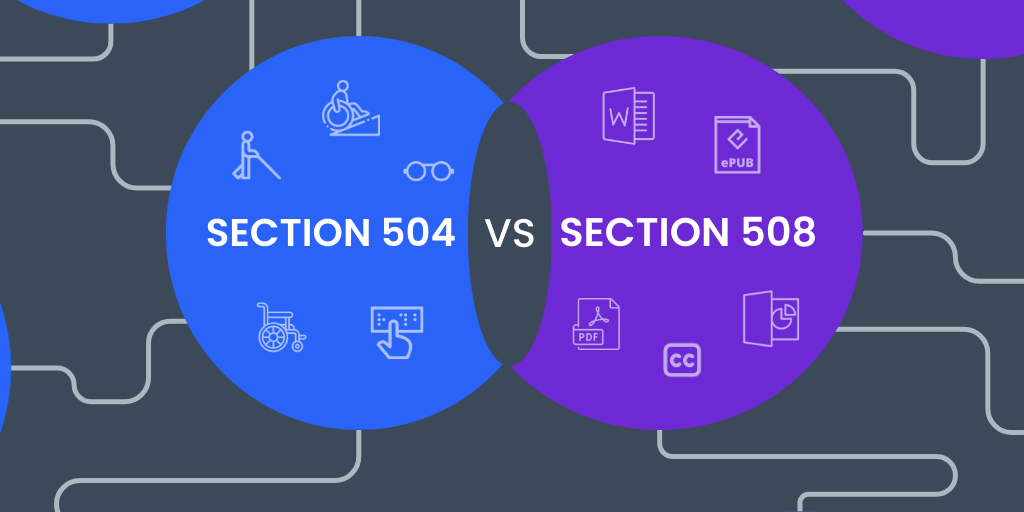Did you know that over one billion people worldwide have some form of disability? It is a staggering number. And here is another eye-opener: a study by WebAIM found that a whopping 70% of online shopping carts are abandoned due to accessibility issues. That means a huge chunk of potential customers are struggling to navigate the checkout process. Imagine walking through a museum filled with awe-inspiring artifacts, but the descriptions are only in braille. That’s exactly how it feels for people with disabilities when they encounter inaccessible content.
This is where “Born Accessible” content comes into the picture. It means content is created from the ground up with accessibility in mind, ensuring everyone can understand and engage with it. This blog post will be your guide to creating inclusive content and it comes with a checklist to help you create your own born accessible content.
The Importance of Born Accessible Content:
So why is “Born Accessible” content so important? It is a term coined to describe digital content that is accessible to all users, including those with disabilities, from the very beginning. It follows the core principles of the Web Content Accessibility Guidelines (WCAG), which focus on perceivability, operability, understandability, and robustness.
Here are some key benefits of creating born accessible content:
- Reduced rework: Fixing accessibility issues later is costly and time-consuming.
- Wider reach: Accessible content opens your content to a much larger audience, increasing engagement and potential customers.
- SEO benefits: Search engines favor accessible websites, giving your content a ranking boost.
But it’s not just about benefits. There are also legal considerations. Non-compliance with accessibility standards can lead to legal repercussions under laws like the Americans with Disabilities Act (ADA) and Section 508 of the Rehabilitation Act. So, in addition to being beneficial, born accessible content is also imperative from a legal standpoint.
Born Accessible Content Checklist: Your Step-by-Step Guide
A step-by-step checklist is given below and covers content in text, image, audio and video formats.
Step 1: Understand Web Content Accessibility Guidelines (WCAG)
The Web Content Accessibility Guidelines (WCAG) are the international standards for making web content accessible to people with disabilities. While these guidelines are primarily focused on web content, they serve as a valuable foundation for making any digital content accessible.
Imagine you’re creating an online course with video lectures and accompanying PDFs. By following WCAG guidelines, you can ensure that your videos have closed captions for individuals with hearing impairments, and your PDFs are structured and tagged correctly for screen readers used by those with visual disabilities.
Step 2: Prioritize Semantic Structure and Markup
Proper semantic structure and markup are crucial for creating accessible content. This involves using the appropriate HTML tags, heading structures, and ARIA (Accessible Rich Internet Applications) attributes to convey the meaning and relationships within your content.
For example, when creating a blog post, using proper semantic markup like headings (h1, h2, h3), and lists (ul, ol), can greatly enhance the experience for individuals using screen readers or other assistive technologies. This structured approach ensures that the content is presented logically and easy to navigate.
Step 3: Optimize for Keyboard Navigation and Focus Management
Many individuals with disabilities rely on keyboard navigation to interact with digital content. Ensuring that your content is fully operable using only a keyboard and that focus is managed correctly is essential for accessibility.
Imagine you’re building an interactive form on your website. By implementing proper keyboard navigation and focus management, users can easily tab through the form fields, select options, and submit the form without relying on a mouse or touch input.
Step 4: Adding Descriptive Alternative Text for Non-Text Content
Alternative text is a description you provide for things like images, charts, and graphs that do not have any text in them. Alt text is important for users who use screen readers or have visual impairments. When writing alt text, remember to describe what the image is about and what its purpose is, instead of just focusing on how it looks.
For example, if you have an image of a dog playing in the park, the alt text could be “A brown dog playing with a frisbee in a sunny park”. This helps individuals who use screen readers or have visual impairments understand the content of the image.
Step 5: Making Sure Colors and Text are Easy to Read
It is crucial to have a good color contrast between the text and its background. This is especially important for people with visual impairments. You can use online tools to check the contrast ratio of your colors. Also, make sure that your text can be resized up to 200% without losing any content or messing up the functionality.
For instance, if you have a website with a light blue background and white text, this might be difficult for some users to read due to low contrast. You could use an online contrast checker to ensure your text color and background color have a sufficient contrast ratio. Also, make sure your website supports text resizing without loss of content, for example, when a user zooms in on a paragraph, the text should increase in size and not be cut off or overlapped by other elements.
Step 6: Adding Transcripts and Captions for Multimedia
When it comes to audio and video content, it’s essential to provide transcripts and captions. Transcripts make it possible for people who are deaf or hard-of-hearing to understand the content. Captions, on the other hand, sync up the text with the media. And hey, if there are any important visuals in your videos, consider adding audio descriptions to help folks who can’t see them.
If you have a video tutorial on how to bake a cake, provide a transcript of the audio and captions synchronized with the video. The transcript could be a simple text version of all the spoken words in the video. The captions should appear on-screen during the video, matching the audio. For important visual content not covered in the audio, consider providing audio descriptions.
Step 7: Testing and Validating Accessibility
Try out different tools and methods to check the accessibility of your content. You can use automated accessibility checkers, do some manual testing, and even get feedback from people with disabilities through user testing.
However, it is important to remember that ticking way the boxes in this checklist would not make the content accessible. Like any other content, creating accessible content also has a global standard that it needs to adhere to and in this case it is the Benetech Certification.
Benetech Certification: The Gold Standard
Benetech is a non-profit organization that leads the way in creating accessible content. Their Benetech Global Certified Accessible (GCA) program is known for its thorough evaluation process.
The certification process includes several stages:
Standards and Guidelines: The certification process follows recognized standards and guidelines such as the EPUB Accessibility 1.1 specification, World Wide Web Consortium’s (W3C) Web Content Accessibility Guidelines (WCAG) 2.2 AA, and accessibility metadata to promote conformance and discoverability of certified accessible publications.
Review Process: Benetech’s GCA team reviews a few of the platform created files in depth, evaluating over one hundred accessibility features. Tools like ACE by DAISY are used to check feature compliance and an independent review of additional features is performed.
Scoring and Approval: Each EPUB, or component, is given an overall accessibility score and receives a detailed summary of how it performed. If the file does not meet Benetech Approved Publishing Tool (BAPT) approval criteria, the publisher is asked to remediate the file and resubmit it for a second review. This process is repeated until a qualifying score is reached.
Certification: Once the title-by-title process is completed, the tool is granted approval and may auto-certify titles produced by that workflow for the next year.
The Benetech Certification program is rigorous and comprehensive, ensuring that certified content is truly accessible to all users. Apex CoVantage is Benetech certified, so documenta11y follows the same process to create born accessible documents.
Achieving Benetech Certification takes your content from good to exceptional, offering a range of benefits beyond just compliance. Here’s how:
- Demonstrates Commitment to Accessibility: By achieving Benetech Certification, you clearly show your organization’s dedication to accessibility. It demonstrates that you value inclusivity and are willing to go the extra mile to make your content accessible to all users, regardless of their abilities.
- Ensures Highest Accessibility Standards: Benetech Certification guarantees that your content meets the highest accessibility standards. The certification process evaluates your content against the globally recognized Web Content Accessibility Guidelines (WCAG), which are the gold standard for web accessibility.
- Increases Trust and Reputation: When your organization achieves Benetech Certification, it enhances your reputation in the market. Customers, partners, and stakeholders see you as responsible and caring, which can build trust and loyalty.
- Provides Competitive Advantage: Lastly, Benetech Certification can give you a competitive edge. As awareness about accessibility grows, more customers prefer organizations that prioritize accessibility. So, having Benetech Certification sets you apart from your competitors.
The Takeaway: Make a Difference with Born Accessible Content
In closing, creating born accessible content is not just the right thing to do, but a strategic investment. You will reach a wider audience, boost SEO, and avoid legal pitfalls. By following our Born Accessible Content Checklist and considering Benetech Certification, you can ensure your content is inclusive and future-proof. Remember, everyone deserves to experience the power of your content. Let us discuss how to make your content born accessible! Contact us today for a consultation with one of our accessibility experts. Let us work together to break down barriers and create a more accessible digital world.
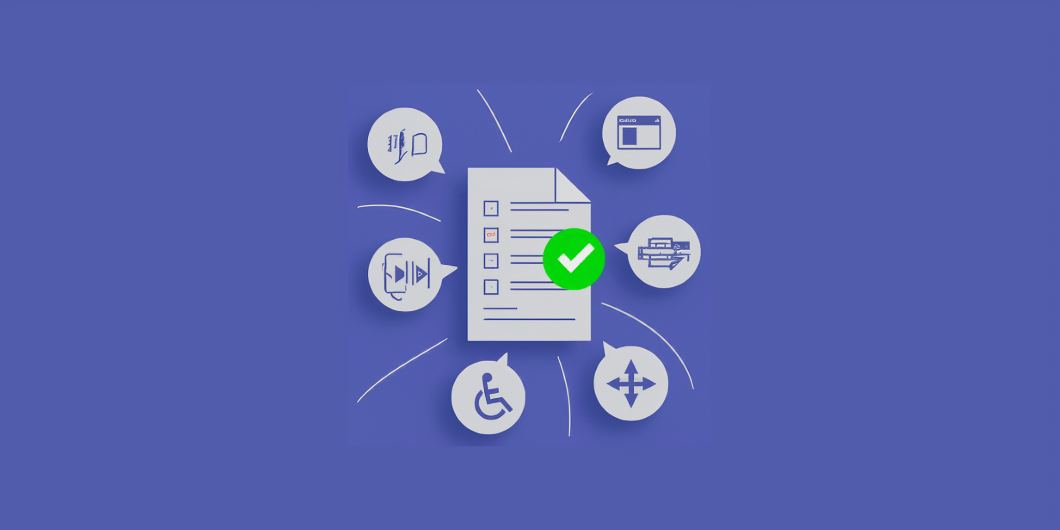
 5 Key Things to Look for When Choosing a PDF Accessibility Partner
5 Key Things to Look for When Choosing a PDF Accessibility Partner How Semantic Structure and Regions Improve Digital Accessibility
How Semantic Structure and Regions Improve Digital Accessibility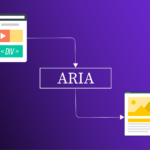 Less ARIA, More Accessibility: Documenta11y's Guide to Cleaner Web Content
Less ARIA, More Accessibility: Documenta11y's Guide to Cleaner Web Content